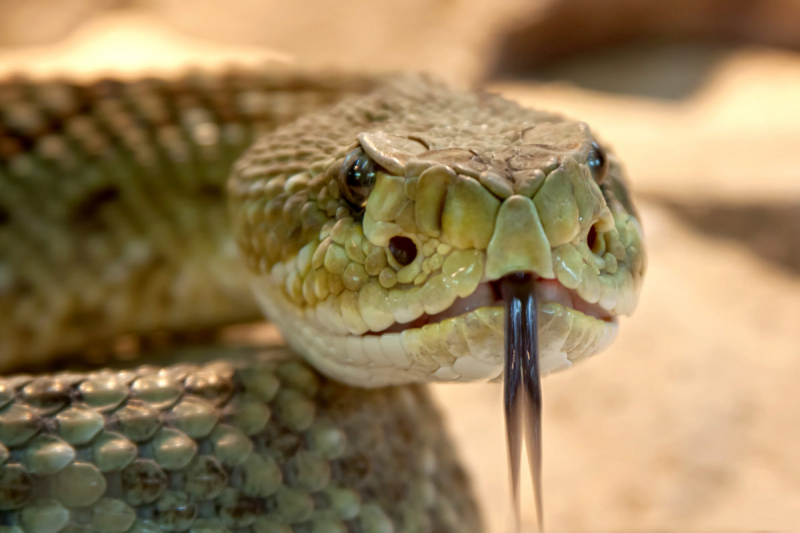Snakes
All snakes are carnivorous and feed on small animals such as lizards, frogs, other snakes, small mammals, birds, eggs, fish, snails, worms, and insects. Snakes cannot bite or tear their prey into bits, thus they must swallow it whole. A snake's eating habits are heavily determined by its body size; smaller snakes consume smaller food. For example, juvenile pythons may feed on lizards or mice as a juvenile and then progress to small deer or antelope as an adult. Most snakes are nonvenomous, and those that are venomous use them to kill and subdue prey rather than for self-defense. Some have venom strong enough to cause severe harm or death in humans. Nonvenomous snakes consume their prey alive or kill by constriction.
Local species will enter a period of brumation if winters are too cold for them to withstand while being active. Unlike hibernating mammals, which are genuinely asleep, brumating reptiles are awake yet inactive. Individual snakes can brumate in tunnels, under rock piles, or inside fallen trees, while huge groups of snakes can brumate in hibernacula.
Snakes, particularly larger snakes that frequently plunge into water, are also common predators of raccoons, according to Chris, a founder of Fauna Facts (an animal and pets resource site). These animals, particularly pythons, will easily consume a raccoon. They can swallow it whole, but they must first squeeze it to kill them. Other snakes, such as cobras and larger snakes, have the ability to trap raccoons.














